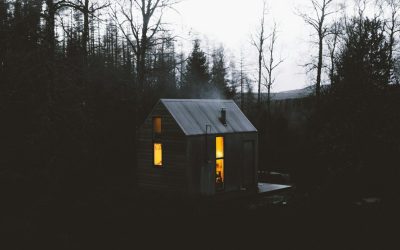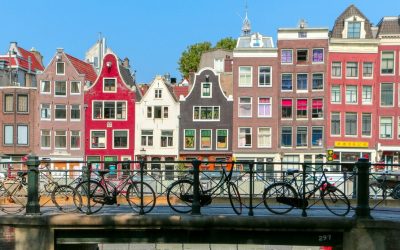 di Nadia Fondelli – Questo mese vi guideremo in un itinerario di misticismo fra abbazie,pievi monasteri ed eremi che offrono in molti casi anche un’ospitalità fatta di semplicità. Luoghi che affondano l’origine in tempi lontano e spesso situati in ambienti solitari perfetti per vacanze speciali, ma anche ottimi punti di partenza per vivere la Toscana da un angolazione diversa. Impossibile visitarli tutti e allora abbiamo deciso di proporvi un gran tour sulle orme del sacro.
di Nadia Fondelli – Questo mese vi guideremo in un itinerario di misticismo fra abbazie,pievi monasteri ed eremi che offrono in molti casi anche un’ospitalità fatta di semplicità. Luoghi che affondano l’origine in tempi lontano e spesso situati in ambienti solitari perfetti per vacanze speciali, ma anche ottimi punti di partenza per vivere la Toscana da un angolazione diversa. Impossibile visitarli tutti e allora abbiamo deciso di proporvi un gran tour sulle orme del sacro.
Partiamo da Cortona dove in località Le Celle sono delle grotte sul costone del Monte Sant’Egidio dov’erano soliti rifugiarsi i poveri quando San Francesco vi si ritirò in preghiera. Qui nel 1231 venne eretto un Eremo che dal 1922 accoglie tutti coloro che vogliono fermarsi in questo luogo a cavallo fra Umbria e Toscana. Tel. 0575 603362.
Nel cuore di Firenze è invece l’Abbazia di Santa Trinita dove nel complesso di via del Parione sono dall’XI secolo i Vallombrosiani che oggi posseggono quello che una volta era il noviziato. L’Abbazia, una miscela di gotico e romanico frequentata anche da Michelangelo comprendeva altri locali ora adibiti ad uso pubblico e la parrocchia nominata in una Bolla di Papa Lucio III nel 1183. Pregevoli le opere conservate fra cui un’Adorazione dei Pastori di Domenico Ghirlandaio. Si può dormire su prenotazione e degustare i prodotti medicinali che i frati fin dal 1780 producono fra cui l’ Elisir stomatico per digestione e i liquori giallo verde a base di timo ed erbe aromatiche. Tel 055216912
Per chi si trova in Maremma impossibile non salire sulle pendici del Monte Argentario dove, nel 1728 San Paolo della Croce fondò il Romitorio di Sant’Antonio creando il primo nucleo dell’Ordine completato più tardi con la chiesa, il convento e l’edificio del noviziato oggi adibito a casa di preghiera. La posizione splendida che domina dall’alto la costa, la frescura e il silenzio dei boschi circostanti fanno di questa casa dei Padri Passionisti un luogo ideale per fermarsi qualche giorno, mentre per chi è solo di passaggio da provare è il liquore “argentarium”. Tel. 0564 812641.
Salendo la costa, poco fuori Livorno è inevitabile fermarsi al Santuario di Montenero il più antico e famoso della regione che la leggenda narra sia stato dedicato alla Madonna delle Grazie a seguito de ritrovamento sulla spiaggia dell’Ardenza di una tavola con la sua immagine. In stile barocco il Santuario, oggi è dei Benedettini Vallombrosani che ne hanno fatto la sede della “Santa Lega Mariana, per promuovere il culto della Madonna ed ospitano in moderne camere. Tel. 0586 57771.
Sulle Alpi Apuane, a Vergemoli è l’Eremo di Calomini a strapiombo su un costone roccioso con una chiesina dell’XI secolo ed un romitorio per la vita ascetica e meditativa dove gli eremiti sono rimasti fino al 1868. Dal 1966 con decreto vescovile il luogo è divenuto Santuario Diocesano. Splendide le celle e parte della chiesa scavate nella roccia con la veneratissima statua lignea della Madonna della Penna. Non si può dormire, ma degna di una visita è l’erboristeria. Tel. 0583 767003.
Spostandoci nel territorio di Massa Carrara l’invito è di fermarsi a Mulazzo dov’è un santuario dedicato alla Madonna del Monte eretto in seguito ad un fatto miracoloso il cui culto risale al XII secolo epoca in cui i benedettini dell’Abbazia di Borzone fondarono questo priorato isolato sulla vetta di un monte ad oltre 900 metri di quota. Si può anche soggiornare in apposite case per villeggiatura.
Tornando a sud chiudiamo idealmente il nostro tour in un luogo famoso di grande fascino appena fuori Montalcino: Sant’Antimo fondato – fra leggenda e realtà – da Carlo Magno che nel 781 tornando da Roma vide in questa vallata morire molti suoi soldati colpiti dalla peste e per porre fine all’epidemia giurò di far costruire un’Abbazia. Di quell’abbazia rimangono solo la Cripta e la Cappella carolingia. Dal 1992 il luogo è affidato ai Canonici Regolari di Sant’Agostino. Qui tutte le funzioni sono cantate in gregoriano e l’ospitalità è composta da dieci camere e quattro dormitori per gruppi autogestiti. Tel. 0577 835659- by Nadia Fondelli – This month, we’ll take you on a mystic tour around the monasteries, churches, abbeys and hermitages that also often offer simple hospitality.
by Nadia Fondelli – This month, we’ll take you on a mystic tour around the monasteries, churches, abbeys and hermitages that also often offer simple hospitality.
These are places that originated in the distant buy cheap cialis site espharmacycom past and are often located in solitary environments, perfect for special holidays, as well as being great starting points to experience Tuscany from a different perspective. It’s just not possible to visit them all, so we’ve decided to offer you a religious grand tour.
Let’s start in Cortona, where you’ll encounter some grottos around Le Celle on the ridge of Monte Sant’Egidio, where the poor often sought refuge when Saint Francis retired here in prayer. A hermitage was erected here in 1231, which welcomed all those who wished to stay here between Umbria and Tuscany from 1922 onwards. Tel. 0575 603362
In the heart of Tuscany, there’s the monastery of Santa Trinita, where the Vallombrosan monks have stayed in the buildings along Via del Parione since the eleventh century, who now own what was once the novitiate. A mixture of Gothic and Romanesque, also frequented by Michelangelo, the monastery included other premises, now used by the public, and the parish named in a papal bull by Lucius III in 1183. It is home to valuable works, including Domenico Ghirlandaio’s Adoration of the Shepherds. You can sleep here if booked in advance and enjoy the medicinal products that the monks have been producing here since 1780, including the elixir for stomachs for digestion and the green-yellow liqueurs based on thyme and herbs. Tel 055216912.
If you’re in the Maremma area, climbing up the slopes of Monte Argentario is a must, where Saint Paul of the Cross founded the Romitorio di Sant’Antonio in 1728, creating the first centre of the order, which was completed later with the church, monastery and the novitiate building, now used as a prayer house. The wonderful position that dominates the coast from on high, the coolness and silence of the surrounding woods make this house of the Passionists a perfect place to stop for a few days. If you’re just passing through, make sure you try the argentarium liqueur. Tel. 0564 812641.
Heading up the coast, just outside Livorno, stopping in the sanctuary of Montenero is a must, the oldest and most famous one in the region. The legend goes that it was named after Our Lady of Graces following the unearthing of a painting with her image on the Ardenza beach. In Baroque style, the sanctuary now belongs to the Vallombrosan Benedictines, who have created the headquarters of the Santa Lega Mariana to promote the worship of the Virgin Mary and provide hospitality in modern rooms. Tel. 0586 57771.
In the Apuan Alps, in Vergemoli, you come across the Eremo di Calomini, perched on a rocky ridge with an eleventh-century chapel and a hermitage for the ascetic and meditative life, where hermits remained until 1868. The place became a Diocesan sanctuary with the bishop’s decree in 1966. The cells are wonderful, as well as part of the church carved into the rock with the much worshipped wooden statue of Madonna della Penna. You can’t sleep here, but the herbalist’s shop is well worth a visit. Tel. 0583 767003.
Moving into the Massa Carrara area, you’re invited to stop in Mulazzo, where a sanctuary dedicated to Madonna del Monte, erected after a miracle, whose worship dates back to the twelfth century, when the Benedictines of the Abbazia di Borzone founded this isolated priory on the top of a mountain more than 3,000 feet above sea level. You can also stay here in holiday homes.
Heading back down to the south, we finish off our tour in a famous place that’s full of charm just outside Montalcino. Cloaked in myth and fact, Sant’Antimo was founded by Charlemagne, who saw many of his soldiers die in this valley, struck by the plague, in 781 on his way back from Rome and he swore that he would build a monastery to put an end to the epidemic. Only the crypt and Carolingian chapel remain of that monastery. The place is entrusted to the Canons Regular of Sant’Agostino in 1992. Here all the functions are sung in Gregorian and hospitality consists of ten rooms and four dormitories for self-managed groups. Tel. 0577 835659.




0 commenti